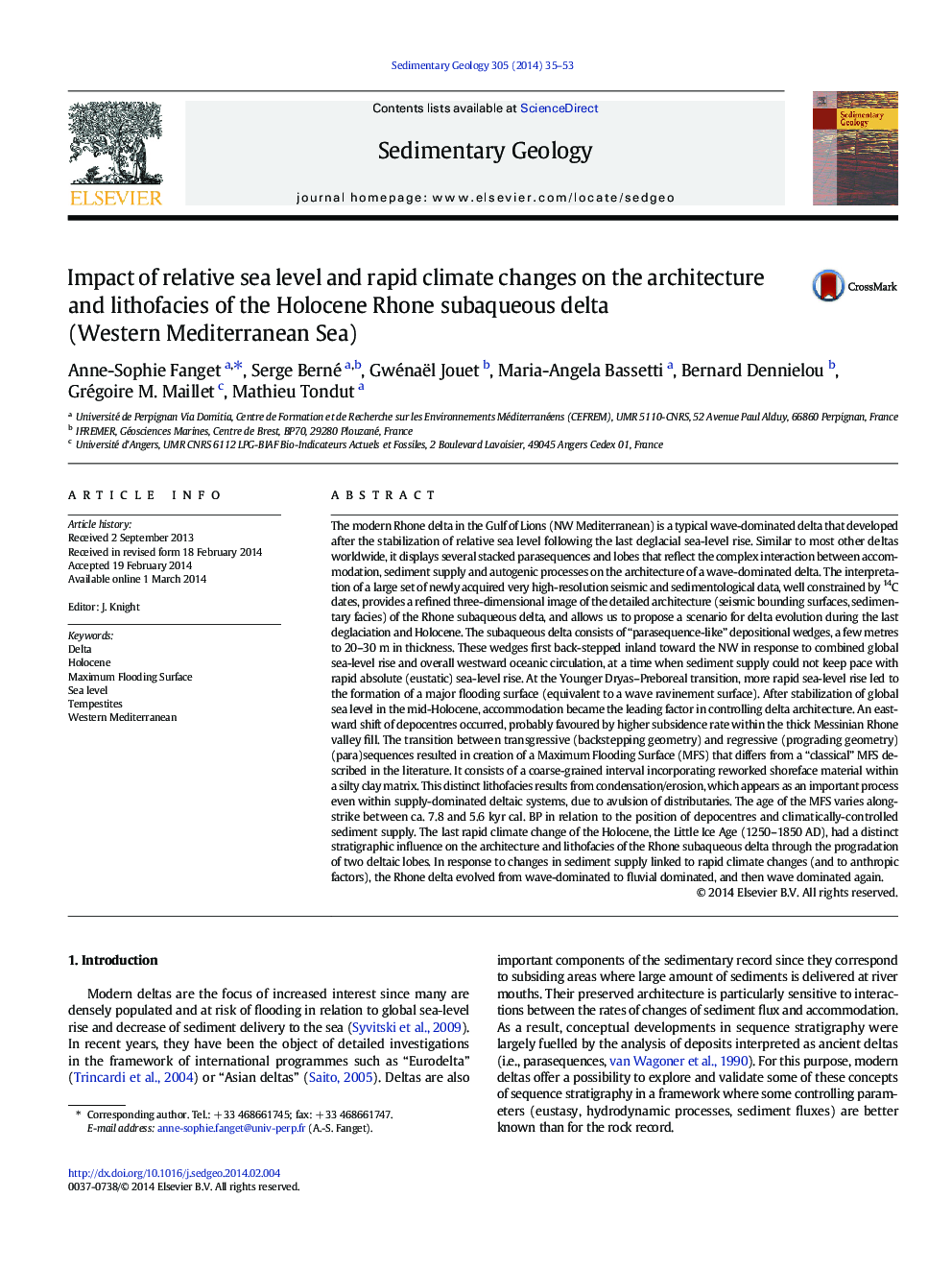| کد مقاله | کد نشریه | سال انتشار | مقاله انگلیسی | نسخه تمام متن |
|---|---|---|---|---|
| 4689401 | 1636058 | 2014 | 19 صفحه PDF | دانلود رایگان |
The modern Rhone delta in the Gulf of Lions (NW Mediterranean) is a typical wave-dominated delta that developed after the stabilization of relative sea level following the last deglacial sea-level rise. Similar to most other deltas worldwide, it displays several stacked parasequences and lobes that reflect the complex interaction between accommodation, sediment supply and autogenic processes on the architecture of a wave-dominated delta. The interpretation of a large set of newly acquired very high-resolution seismic and sedimentological data, well constrained by 14C dates, provides a refined three-dimensional image of the detailed architecture (seismic bounding surfaces, sedimentary facies) of the Rhone subaqueous delta, and allows us to propose a scenario for delta evolution during the last deglaciation and Holocene. The subaqueous delta consists of “parasequence-like” depositional wedges, a few metres to 20–30 m in thickness. These wedges first back-stepped inland toward the NW in response to combined global sea-level rise and overall westward oceanic circulation, at a time when sediment supply could not keep pace with rapid absolute (eustatic) sea-level rise. At the Younger Dryas–Preboreal transition, more rapid sea-level rise led to the formation of a major flooding surface (equivalent to a wave ravinement surface). After stabilization of global sea level in the mid-Holocene, accommodation became the leading factor in controlling delta architecture. An eastward shift of depocentres occurred, probably favoured by higher subsidence rate within the thick Messinian Rhone valley fill. The transition between transgressive (backstepping geometry) and regressive (prograding geometry) (para)sequences resulted in creation of a Maximum Flooding Surface (MFS) that differs from a “classical” MFS described in the literature. It consists of a coarse-grained interval incorporating reworked shoreface material within a silty clay matrix. This distinct lithofacies results from condensation/erosion, which appears as an important process even within supply-dominated deltaic systems, due to avulsion of distributaries. The age of the MFS varies along-strike between ca. 7.8 and 5.6 kyr cal. BP in relation to the position of depocentres and climatically-controlled sediment supply. The last rapid climate change of the Holocene, the Little Ice Age (1250–1850 AD), had a distinct stratigraphic influence on the architecture and lithofacies of the Rhone subaqueous delta through the progradation of two deltaic lobes. In response to changes in sediment supply linked to rapid climate changes (and to anthropic factors), the Rhone delta evolved from wave-dominated to fluvial dominated, and then wave dominated again.
Journal: Sedimentary Geology - Volume 305, 15 May 2014, Pages 35–53
